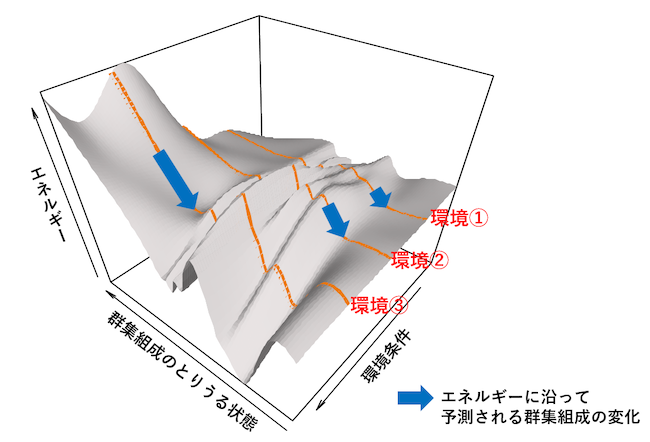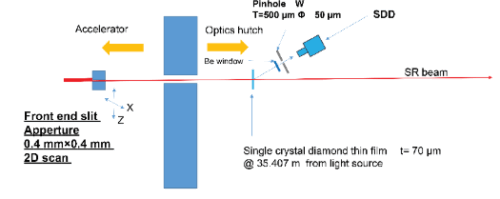2025-04-30 国立環境研究所,理化学研究所

図1.実際の生物群集組成データから推定されたエネルギー地形の例。環境条件が異なる場合(例:環境①、②、③)、群集組成の変化経路も異なる。また、環境条件が時間的に変化しない場合であっても群集はエネルギーの低い方向へ変化する傾向がある(青色の矢印)。
<関連情報>
- https://www.nies.go.jp/whatsnew/2025/20250430/20250430.html
- https://www.pnas.org/doi/10.1073/pnas.2422701122
エネルギー的不安定性と生物群集の組成変化との関連性 Linking energetic instability to compositional changes in biological communities
Taku Kadoya, Kenta Suzuki, and Akira Terui
Proceedings of the National Academy of Sciences Published:April 21, 2025
DOI:https://doi.org/10.1073/pnas.2422701122
Significance
The possible states of an ecological community may help us anticipate how its composition will change after disturbances if the available long-term observations include the relevant disturbances and alternative community compositions. However, such long-term data are rarely available in ecology. Here, we propose energy landscape analysis to approximate the likelihood of compositional shifts. Our method remains feasible even with unobserved community states and disturbances by evaluating the energy of every possible community composition through spatial modeling. Our simulations and empirical validation demonstrate that compositional shifts tend to follow predictable trajectories from higher-energy (unstable) to lower-energy (stable) states, allowing us to anticipate the magnitude of community changes in response to external perturbations. Our approach provides significant insights into ecological prediction.
Abstract
The resilience of an ecological community informs us how it will respond to future environmental disturbances. However, the concept is rarely tested in the context of predicting biodiversity change, particularly at broad spatial and taxonomic scales. Here, we show that measures of instability derived from the resilience of the current state of community compositions greatly improve the predictability of biodiversity change. We applied energy landscape analysis (ELA) to community compositions of both simulated and natural ecosystems of distinctive regions and taxa (birds, fishes, mollusks, and phytoplankton) and estimated the resilience of those systems. We found that a metric of local instability, which represents how current community states are inflated from local optima, explained well the magnitude of species turnover and energy changes from the current to future states for both simulated and real communities. A metric of global instability, which represents a community’s tendency to cross-over ridges of local basins of attraction to alternate stable states, also served as a weaker yet significant index of such changes. Our ELA results suggest that quantifying the resilience of real ecosystems is essential for understanding the mechanisms of community dynamics in an effort to improve the prediction of biodiversity change.



